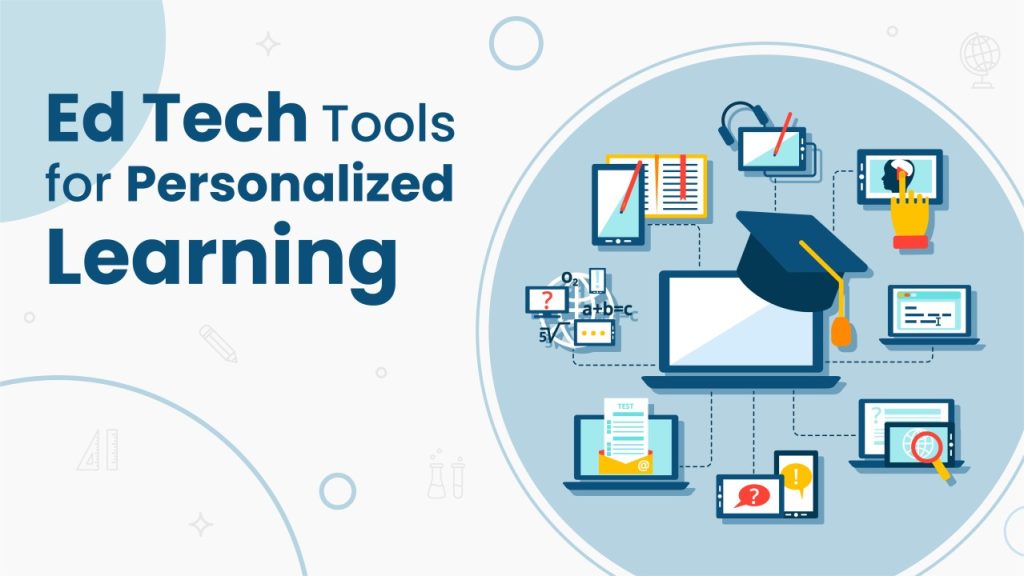Students today face a completely different educational landscape than their parents did. Technology has transformed how we learn, study, and connect with information. But here’s the thing – not all digital tools are created equal.
The right EdTech tools can turn struggling students into academic superstars. However, the wrong ones waste time and create more confusion. After analyzing hundreds of educational platforms and studying patterns of student success, I’ve identified the tools that make a difference.
This article covers the most effective EdTech tools available today. You’ll discover digital learning platforms that boost engagement, assessment tools that provide instant feedback, and study techniques that work in our digital age. Additionally, I’ll share practical tips for evaluating which tools are worth your time and attention.
Top Digital Learning Platforms
Google Classroom

Google Classroom has become the backbone of modern education, and for good reason. This platform handles everything from assignment distribution to grade tracking with remarkable simplicity.
What makes Google Classroom special isn’t its flashy features – it’s the seamless integration with other Google tools. Students can access Google Docs, Sheets, and Slides directly within their assignments. Teachers can provide real-time feedback on documents, and students can collaborate on projects without needing to leave the platform.
Recent data shows that schools using Google Classroom see a 23% increase in assignment completion rates. The platform’s mobile app ensures students stay connected to their coursework, even when they’re away from their computers.
Canvas
Canvas takes a more comprehensive approach to learning management. Unlike simpler platforms, Canvas offers sophisticated analytics that helps both students and teachers understand learning patterns.
The platform’s SpeedGrader feature revolutionizes the delivery of feedback. Teachers can provide audio comments, annotate directly on submissions, and create rubrics that offer detailed performance breakdowns. Students receive instant notifications when grades are posted, keeping them engaged with their progress.
Canvas also excels at course organization. Its module system breaks complex subjects into digestible chunks, making it easier for students to track their progress through lengthy courses.
Interactive Classroom Solutions
Modern classrooms demand tools that encourage active participation. Static presentations and one-way lectures no longer suffice.
Pear Deck transforms traditional slideshows into interactive experiences. Students respond to questions in real time, and teachers can see every response instantly. This immediate feedback loop helps identify confusion before it becomes a significant problem.
The platform’s anonymous response feature encourages shy students to participate. When students know their answers won’t be singled out, they’re more likely to engage honestly with challenging questions.
Interactive whiteboards and digital annotation tools create collaborative learning spaces. Students can work together on problems, even when they’re in different locations. These tools effectively bridge the gap between physical and virtual classrooms.
Tools for Language and Assessment
Adaptive learning platforms have revolutionized language learning. Duolingo’s success stems from its bite-sized lessons and consistent reinforcement system. The app uses spaced repetition to ensure new vocabulary sticks long-term.
Khan Academy provides comprehensive assessment tools across multiple subjects. Its mastery-based learning approach ensures students truly understand concepts before moving forward. The platform’s detailed progress tracking helps both students and parents identify areas that need additional attention.
Assessment tools now provide instant feedback that was impossible in traditional testing environments. Students can immediately see which questions they missed and access explanations for correct answers. This immediate clarification prevents misconceptions from taking root.
Gamified Learning Experiences
Gaming elements in education aren’t just fun – they’re scientifically proven to increase retention and engagement. Kahoot turns review sessions into competitive games that students look forward to.
The key to successful gamification lies in meaningful rewards. Points and badges motivate students when they’re tied to actual learning achievements. Leaderboards foster healthy competition that encourages students to enhance their performance.
Minecraft Education Edition deserves special mention for its creative approach to learning. Students build historical monuments while learning about ancient civilizations. They create electrical circuits while studying the principles of physics. This hands-on approach makes abstract concepts tangible and memorable.
Supporting Mental Well-being
Headspace
Academic stress has reached unprecedented levels among students. Headspace addresses this challenge with guided meditation sessions specifically designed to manage academic pressures.
The app’s “Study” section features sessions designed to address pre-exam anxiety, improve concentration, and optimize sleep. Students who use Headspace regularly report a 15% improvement in focus during study sessions and enhanced sleep quality during stressful periods.
Mindfulness isn’t just about relaxation – it’s about building resilience. Students who practice mindfulness techniques show better emotional regulation during challenging academic situations.
Evernote
Effective note-taking remains one of the most crucial skills for students, yet many struggle with organization. Evernote transforms chaotic note collections into searchable, organized knowledge bases.
The platform’s web clipper allows students to save relevant articles and research directly into their notebooks. Tags and search functionality make retrieving information effortless, even months after initial collection.
Cross-device synchronization ensures students can access their notes anywhere. Whether they’re studying on their laptop, tablet, or phone, their complete note collection is always available.
Scribe
Scribe automatically creates step-by-step documentation for any process. For group projects and research assignments, this tool eliminates confusion about procedures and requirements.
Students can create visual guides for complex processes, making it easier to share knowledge with classmates. The collaborative features allow team members to edit and improve documentation together.
Study Tips for Students
Prioritize Tasks
Time management separates successful students from those who struggle. The Pomodoro Technique, enhanced by digital timers and task-tracking apps, helps students maintain focus during study sessions.
Effective prioritization starts with identifying high-impact activities. Students should tackle their most challenging subjects when their mental energy is highest, typically in the morning hours.
Digital calendars integrated with assignment trackers prevent last-minute panic. Students can see upcoming deadlines weeks in advance and plan their study schedules accordingly.
Active Learning
Passive reading doesn’t create lasting knowledge. Active learning techniques force students to process information deeply and make meaningful connections.
Teaching concepts to others remains one of the most effective ways to learn. Students can create video explanations, write blog posts, or present to study groups. This process reveals knowledge gaps that passive studying misses.
Retrieval practice is more effective at strengthening memory than repeated reading. Students should test themselves frequently without looking at their notes. Digital flashcard apps, such as Anki, utilize spaced repetition algorithms to optimize this process.
Evaluating EdTech Tools

Aligning Tools with Educational Goals
Not every shiny new app deserves space on your device. Successful students carefully evaluate tools based on specific learning objectives.
Begin by identifying your most significant academic challenges. Do you struggle with organization, time management, or content comprehension? Select tools that specifically address these issues.
Free trials offer risk-free opportunities to test effectiveness. Spend at least two weeks with any new tool before committing. This timeline enables you to experience the tool in various types of academic activities.
Measuring Impact on Student Engagement
Track measurable outcomes when adopting new tools. Monitor grade improvements, assignment completion rates, and time spent studying. Practical tools should show positive impacts within the first month of consistent use.
Student feedback offers valuable insights into the effectiveness of the tool. Regular surveys and focus groups help educators understand which tools enhance learning and which ones add complexity.
Data analytics from educational platforms reveal usage patterns and learning outcomes. Schools that actively monitor these metrics see 18% better tool adoption rates and improved student satisfaction scores.
Conclusion
The best EdTech tools share common characteristics: they solve real problems, integrate seamlessly into existing workflows, and provide measurable improvements in learning outcomes.
Success with educational technology requires intentional selection and consistent usage. Students and educators should focus on tools that align with specific learning goals rather than adopting every new platform that emerges.
The future of education lies in the thoughtful integration of technology. Tools that enhance human connection and creativity will thrive, while those that digitize traditional methods will fade away.
Remember, technology serves learning – not the other way around. Choose tools that amplify your natural abilities and help you achieve your academic goals more effectively.
ALSO READ: How Does Edtech Help Students and Teachers
FAQs
Effective EdTech tools address specific learning challenges, integrate seamlessly into existing study routines, and yield measurable improvements in grades or comprehension within 30 days of use.
Limit yourself to 3-5 core tools that address your biggest academic challenges. Start with one new tool at a time and use it consistently for two weeks before adding others.
Many free tools offer excellent functionality for basic needs. However, paid versions typically provide advanced features, better customer support, and more comprehensive analytics that benefit serious students.
Teachers should track assignment completion rates, student engagement metrics, grade improvements, and time-to-mastery for new concepts. Successful tools show positive changes in at least two of these areas.
Student feedback is crucial for the long-term success of tools. Tools that students find intuitive and valuable show 60% higher adoption rates than those specified without student input.



